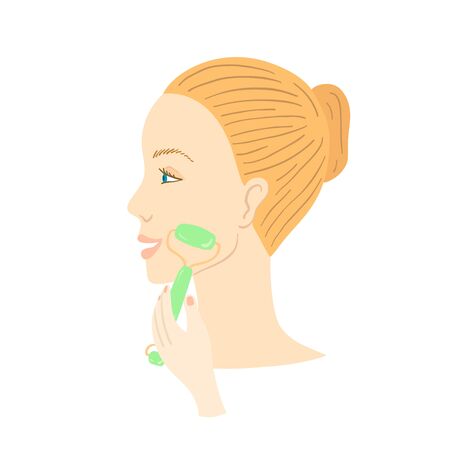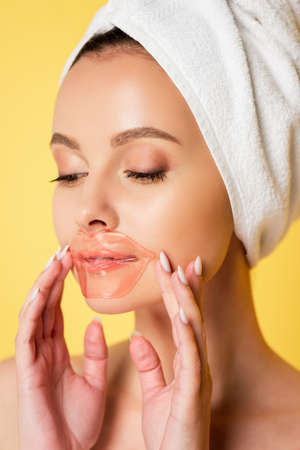1. Understanding Microneedling and Its Effects on Sensitive Skin
Microneedling is a popular skincare treatment that uses tiny needles to create micro-injuries on the skin’s surface. These micro-injuries trigger your body’s natural healing process, encouraging collagen and elastin production—two key components in maintaining youthful, firm skin.
For most people, microneedling can improve the appearance of fine lines, acne scars, enlarged pores, and overall skin texture. But if you have sensitive skin, it’s important to understand how this treatment may affect you differently compared to someone with normal or resilient skin types.
What Happens to the Skin During Microneedling?
The tiny punctures made by the microneedles temporarily disrupt the skin barrier. This makes the skin more permeable and vulnerable right after treatment. While this is part of what makes microneedling effective—allowing serums and active ingredients to penetrate deeper—it also means your skin needs extra care during recovery, especially if its already prone to irritation or inflammation.
Why Sensitive Skin Reacts Differently
Sensitive skin tends to have a compromised skin barrier to begin with. It may overreact to stimuli like temperature changes, certain ingredients, or physical treatments such as microneedling. After microneedling, those with sensitive skin might experience:
- Increased redness or flushing
- Tingling or stinging sensations
- Drier patches or flaky areas
- A longer healing time
Common Reactions After Microneedling Based on Skin Type
| Skin Type | Typical Reaction | Healing Time |
|---|---|---|
| Normal/Combination | Mild redness for 1–2 days | 2–3 days |
| Oily/Acne-Prone | Temporary breakouts or purging | 3–5 days |
| Sensitive | Redness, dryness, irritation lasting longer | 5–7+ days |
Why Microneedling Can Still Be Beneficial for Sensitive Skin
Even though sensitive skin may take longer to heal, microneedling can still offer benefits when done correctly and with proper aftercare. By stimulating collagen production, it can help strengthen the skin barrier over time, making it less reactive in the long run. However, choosing gentle products and following a specific post-treatment routine is crucial for avoiding unnecessary irritation and supporting healthy healing.
Key Takeaways:
- Microneedling involves creating controlled micro-injuries to boost collagen and elastin production.
- Sensitive skin has a weaker barrier and may respond with more intense reactions.
- With the right care, even delicate skin can benefit from microneedling’s long-term results.
In the next section, we’ll explore exactly what you should do immediately after microneedling to protect your sensitive skin and support recovery.
2. Immediate Post-Treatment Care: What to Do and Avoid
Right after your microneedling session, your skin is in a vulnerable state. It’s normal to experience redness, slight swelling, and sensitivity—similar to a mild sunburn. To help your skin heal properly and prevent irritation or infection, it’s important to follow some key steps during the first 24 to 72 hours.
What You Should Do
The immediate hours after microneedling are crucial. Here’s what you should be doing:
- Keep the skin clean: Gently rinse your face with lukewarm water and pat dry using a clean towel. Avoid any cleansers with fragrances or harsh chemicals.
- Hydrate generously: Use a gentle, hydrating serum or moisturizer with hyaluronic acid to support skin recovery and maintain moisture balance.
- Avoid sun exposure: Stay indoors as much as possible and avoid direct sunlight. If you must go out, wear a wide-brimmed hat and apply mineral sunscreen (zinc oxide or titanium dioxide-based) once your provider says its safe—usually after 24 hours.
- Use only approved products: Stick to dermatologist-recommended or professional post-procedure skincare products designed for sensitive skin.
Recommended Products for Sensitive Skin Post-Microneedling
| Product Type | Ingredients to Look For | Why It Helps |
|---|---|---|
| Gentle Cleanser | Ceramides, Panthenol | Cleans without stripping natural oils; soothes irritation |
| Hydrating Serum | Hyaluronic Acid | Binds moisture to the skin; promotes healing |
| Moisturizer | Squalane, Aloe Vera | Nourishes and calms sensitive skin |
| Sunscreen (after 24-48 hrs) | Zinc Oxide, Titanium Dioxide | Mild physical blockers that protect without irritating the skin |
What You Should Avoid
Certain habits and products can interfere with healing or cause irritation. Heres what to steer clear of:
- No makeup for at least 24 hours: Your pores are open and applying makeup can lead to breakouts or infections.
- Avoid sweating: Skip the gym, saunas, and hot showers. Sweat can irritate your sensitive skin and increase the risk of bacteria entering open micro-channels.
- No active ingredients: Hold off on retinol, AHAs/BHAs, vitamin C serums, exfoliants, or any strong anti-aging products until your skin has healed—typically about 5-7 days.
- No touching or picking: As tempting as it may be, dont touch your face unnecessarily and never pick at peeling skin or scabs.
Treating your skin gently right after microneedling sets the stage for better results and fewer complications. Think of this time as giving your skin a chance to rest and regenerate naturally.

3. Best Skincare Products for Recovery
After microneedling, your skin is especially delicate and needs extra care. Choosing the right skincare products can make a big difference in how quickly and comfortably your skin heals. Below are dermatologist-recommended products that are gentle, hydrating, and soothing—perfect for sensitive post-treatment skin.
Gentle Cleansers
Its important to keep your skin clean without stripping away moisture or irritating it further. Look for fragrance-free and sulfate-free formulas.
| Product | Key Benefits |
|---|---|
| Cetaphil Gentle Skin Cleanser | Non-irritating, soap-free, ideal for sensitive skin |
| La Roche-Posay Toleriane Hydrating Gentle Cleanser | Mild formula with ceramides and niacinamide to soothe skin |
Hydrating Serums
Your skin loses moisture after microneedling, so using a serum rich in hyaluronic acid can help replenish hydration and support healing.
| Product | Key Ingredients |
|---|---|
| The Ordinary Hyaluronic Acid 2% + B5 | Hyaluronic acid for hydration, Vitamin B5 for skin repair |
| SkinCeuticals Hydrating B5 Gel | High-concentration hyaluronic acid with panthenol (Vitamin B5) |
Soothing Moisturizers
A calming moisturizer helps lock in hydration while reducing redness and irritation. Choose products free from alcohol, fragrances, and harsh chemicals.
| Product | Main Features |
|---|---|
| CeraVe Moisturizing Cream | Ceramides and hyaluronic acid to restore the skin barrier |
| Avène Cicalfate+ Restorative Protective Cream | Thermal spring water and zinc oxide to calm irritation |
Tips for Product Use After Microneedling:
- Less is more: Stick to a minimal routine to avoid overwhelming your skin.
- No active ingredients: Avoid retinol, AHAs, BHAs, or vitamin C until your skin has fully healed.
- Avoid makeup: Give your skin at least 24–48 hours before applying any makeup.
Using these gentle yet effective products can help reduce downtime and support your skin’s natural recovery process after microneedling. Always patch test new products before full application to ensure they suit your sensitive post-treatment skin.
4. Common Mistakes to Avoid After Microneedling
Microneedling can do wonders for your skin, especially when youre dealing with sensitivity. But post-treatment care is just as important as the procedure itself. Making the wrong moves after your session can lead to irritation, breakouts, or even delay your skin’s healing process. Below are some of the most common mistakes people make after microneedling — and how you can avoid them.
Skipping Gentle Skincare Products
After microneedling, your skin barrier is temporarily compromised. Using harsh cleansers, exfoliants, or products with active ingredients like retinol, AHAs, or BHAs can cause stinging and redness. Stick to gentle, fragrance-free products designed for sensitive skin during the first few days of recovery.
Product Types to Avoid vs. Recommended Alternatives
| Avoid These | Use These Instead |
|---|---|
| Alcohol-based toners | Hydrating toners with hyaluronic acid |
| Retinoids or retinol creams | Ceramide-rich moisturizers |
| AHA/BHA exfoliants | Soothe with aloe vera or chamomile extract |
| Scented skincare products | Fragrance-free formulas |
Touching or Picking at Your Skin
Your skin might feel dry, tight, or slightly itchy after treatment — all normal reactions. But avoid touching, scratching, or picking at it. Doing so could introduce bacteria and increase your risk of infection or scarring.
Exposing Skin to Sunlight Too Soon
Your skin is extra sensitive to UV rays after microneedling. Going out without sun protection can lead to hyperpigmentation and slow down healing. Always wear a broad-spectrum SPF 30 or higher, even on cloudy days.
Wearing Makeup Too Early
You might be tempted to cover up redness with foundation or concealer, but its best to let your skin breathe for at least 24-48 hours post-treatment. Applying makeup too soon can clog pores and interfere with the healing process.
Sweating Too Much (Yes, Really!)
Avoid workouts, saunas, or hot showers for at least 24 hours after microneedling. Excessive sweating can irritate open micro-channels in the skin and increase the chance of breakouts or inflammation.
The 24-Hour Post-Treatment No-Go List:
- No intense workouts
- No saunas or steam rooms
- No hot showers or baths
- No swimming pools (chlorine = irritation)
Avoiding these common missteps will give your sensitive skin the best chance to heal beautifully and get the most benefit from microneedling.
5. When to Seek Professional Help
Microneedling is a popular treatment that can boost collagen production and improve skin texture, but its important to pay attention to how your skin reacts afterward—especially if you have sensitive skin. While some redness, dryness, and mild irritation are normal during the healing process, there are certain signs that may indicate something more serious is going on.
Signs You Shouldnt Ignore
Understanding the difference between normal side effects and adverse reactions can help you know when its time to call your dermatologist. Heres a simple breakdown:
| Normal Reactions (0–3 Days Post-Treatment) | Possible Adverse Reactions (Seek Help) |
|---|---|
| Mild redness or pinkness | Severe redness or swelling that worsens after 48 hours |
| Tightness or dryness | Pus-filled bumps or signs of infection |
| Slight peeling or flaking | Persistent burning or stinging sensation |
| Sensitivity to skincare products | Rashes, hives, or allergic reactions |
When in Doubt, Reach Out
If youre unsure whether your symptoms are normal, its always better to be cautious and check in with a professional. Contact your dermatologist if:
- You notice symptoms getting worse instead of better after 2–3 days.
- Your skin becomes painful to the touch or shows signs of infection like yellow crusting.
- You experience an allergic reaction to any post-treatment product.
- Your skin doesn’t seem to be healing properly after a week.
What Your Dermatologist Might Do
A board-certified dermatologist can assess your skin’s condition and recommend appropriate treatments such as:
- Topical antibiotics for infections
- Corticosteroid creams for inflammation or allergic reactions
- Switching your skincare routine or products
- Scheduling follow-up visits for additional care if needed
Pro Tip:
Always keep a record of the products you use after microneedling and take note of how your skin responds. This information can be super helpful for your dermatologist if any issues arise.
Remember, every persons skin heals differently. Trust your instincts—if something feels off, don’t hesitate to get expert advice.


